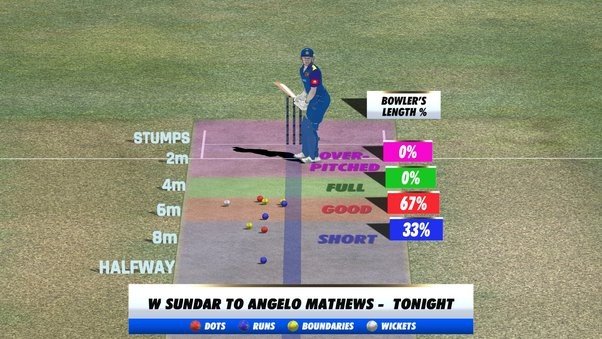Cricket is a game rich in statistics, and analyzing these stats can be a powerful tool for making informed betting decisions. Whether you’re betting on match outcomes, player performances, or specific in-game events, understanding how to interpret cricket data is essential. This guide will walk you through the key aspects of analyzing cricket statistics, including player performance, team form, pitch conditions, and weather influences, to help you make smarter, more strategic bets.
1. The Importance of Cricket Statistics in Betting
Cricket statistics are not just numbers; they provide valuable insights into players’ abilities, team strategies, and match conditions. When used correctly, these stats can help you predict outcomes more accurately, maximizing your chances of making winning bets. Here’s why analyzing cricket stats is essential:
- Informed Decisions: Instead of relying on guesswork, analyzing stats helps you make evidence-based predictions.
- Identification of Trends: Stats reveal patterns, such as a player’s form or a team’s performance in specific conditions, which can be crucial when placing bets.
- Minimizing Risks: With a deep understanding of stats, you can better manage risks by identifying opportunities with higher chances of success.
2. Key Cricket Stats to Focus On
To make smarter betting decisions, you need to focus on the most relevant cricket statistics. Here are some key areas to consider:
A. Player Performance Stats
Player stats are essential when betting on individual performances or predicting match outcomes. Some of the most important stats to analyze include:
- Batting Average: The batting average shows a batsman’s overall performance. A higher average indicates consistency and reliability.
- Strike Rate: The strike rate reflects how quickly a batsman scores runs. A high strike rate is often valuable in limited-overs formats like T20 and ODI cricket.
- Bowling Economy: The bowling economy measures how many runs a bowler concedes per over. A lower economy rate suggests that the bowler is effective at containing runs.
- Wickets Per Match: This stat provides insight into a bowler’s ability to take wickets consistently. It’s particularly useful for betting on top wicket-taker markets.
B. Team Performance Stats
Analyzing team stats helps you understand a team’s overall strength and form. Key stats to look at include:
- Win-Loss Record: This basic stat indicates a team’s recent performance. Consider their record in different formats (Test, ODI, T20) as teams may perform differently across formats.
- Performance on Different Pitches: Some teams perform better on specific types of pitches (e.g., turning tracks vs. fast, bouncy pitches). Analyzing their record in different conditions helps identify their strengths and weaknesses.
- Home vs. Away Record: Teams often perform better at home due to familiarity with pitch conditions and crowd support. Assessing their performance at home and away can guide your bets.
C. Historical Match Data
Historical match data provides insights into head-to-head records, recent encounters, and performances in similar match situations. For instance:
- Head-to-Head Record: Understanding how two teams have fared against each other in the past can offer clues about match outcomes. Some teams may have a psychological edge over others.
- Recent Form: Analyze the results of a team’s last 5-10 matches to gauge their current form. Consistency in winning or losing trends can influence betting decisions.
- Performance in Specific Tournaments: Teams often perform differently in various tournaments or championships, so reviewing historical data specific to the tournament you’re betting on can be crucial.
3. How to Analyze Player Form
Analyzing individual player form is critical, especially when betting on player-specific markets like top run-scorer or wicket-taker. Here’s how to evaluate a player’s current form:
A. Recent Match Performance
Check how the player has performed in their last five matches. Consistency is key; a player with steady performances is more reliable than one with fluctuating scores.
B. Performance Against Specific Opponents
Some players have a history of excelling or struggling against certain teams. Reviewing their past performances against the team they’re currently facing can provide valuable insights. For example, if a batsman has consistently scored runs against a particular team, it may be worth betting on their performance again.
C. Performance Under Different Conditions
Consider how a player performs under various conditions, such as different pitch types and weather conditions. Some players excel on fast pitches, while others thrive on slow, turning tracks. Reviewing these stats helps you anticipate how they might perform in the upcoming match.
Also Like, How to Choose the Right Casino Games for Maximum Payouts
4. The Role of Pitch Conditions in Cricket Betting
The pitch plays a vital role in the outcome of a cricket match. Understanding how different pitches behave and how teams and players perform on those pitches is crucial for smarter betting decisions. Here’s what to look for:
A. Type of Pitch
- Fast and Bouncy Pitches: These pitches favor pace bowlers and batsmen who are comfortable with fast deliveries. They are common in countries like Australia and South Africa.
- Spin-Friendly Pitches: Pitches in countries like India and Sri Lanka often assist spin bowlers. In such conditions, teams with quality spinners usually perform better.
- Batting-Friendly Pitches: Some pitches are conducive to high-scoring matches, with little assistance for bowlers. These pitches often favor batsmen, especially in limited-overs formats.
B. Historical Data on Pitch Behavior
Before placing bets, review historical data on how the pitch has behaved in previous matches. Check factors like average scores, the success rate of bowlers, and how the pitch changes over time (e.g., deteriorating in Test matches).
5. Weather Conditions and Their Impact
Weather conditions significantly impact cricket matches, especially in formats like Test and ODI cricket. For example:
- Rain and DLS Method: In limited-overs cricket, rain interruptions can lead to the Duckworth-Lewis-Stern (DLS) method being used to adjust scores. Understanding the impact of weather forecasts on matches can help you make informed bets.
- Wind: Windy conditions can assist swing bowlers, especially in countries like England. Reviewing how bowlers perform in such conditions can give you an edge.
- Temperature and Humidity: These factors affect players’ stamina and the behavior of the pitch. For example, high humidity in tropical countries may favor spinners as the pitch becomes conducive to spin.
6. In-Play Betting: Analyzing Live Match Stats
In-play or live betting is popular in cricket, as it allows you to bet while the match is ongoing. To make effective in-play bets, you must know how to analyze live match stats:
A. Monitoring Player and Team Performance
Watch for key indicators like a player’s form during the match, team momentum, and any injuries or substitutions that may impact the outcome. For example, if a star batsman is struggling early, it might be wise to bet against him reaching a high score.
B. Pitch and Weather Developments
In Test cricket, the pitch often deteriorates over time, favoring spinners on the final days. Keeping track of these developments can help you anticipate match outcomes and place strategic bets based on how the pitch and weather evolve during the game.
7. Using Data Analysis Tools for Cricket Betting
Several online tools and platforms provide detailed cricket stats and data analysis to help bettors make smarter decisions. Here’s how to use them effectively:
A. Cricket Statistics Websites
Websites like ESPN Cricinfo, Cricbuzz, and ICC’s official site offer comprehensive statistics on players, teams, and matches. Accessing and analyzing these stats provides insights into various betting opportunities.
B. Betting Platforms and Odds Calculators
Many betting platforms provide live odds calculators and in-depth statistical breakdowns. These tools are particularly useful for in-play betting as they offer real-time data on player and team performance, which you can leverage to adjust your bets.
C. Betting Tips and Expert Analysis
Engage with expert analyses and betting tips available online. While it’s essential to do your own research, expert opinions can offer additional insights or validate your own predictions.
8. Creating Your Own Betting Strategy
Once you’ve mastered the art of analyzing cricket stats, you can develop a personalized betting strategy. Here’s how:
A. Identify Your Strengths
Determine whether you are more successful with player performance bets, team bets, or in-play bets. Focus on the area where your analysis has proven most accurate.
B. Set Betting Limits
Use your statistical insights to set realistic betting limits and manage your bankroll. Only bet what you are comfortable losing, and avoid chasing losses based on emotional responses.
C. Review and Refine Your Approach
Keep track of your bets and analyze your performance regularly. Adjust your strategy based on what works and what doesn’t, and continue refining your approach as you gain experience and knowledge.
Conclusion
Analyzing cricket stats is essential for making smarter betting decisions. By focusing on player and team performance, pitch conditions, and weather influences, you can develop a comprehensive approach that increases your chances of success. Remember, the key to effective betting is continuous research, discipline, and the ability to adapt your strategy based on your analysis. With these tips, you can confidently approach cricket betting with a strategic mindset that maximizes your winning potential.


